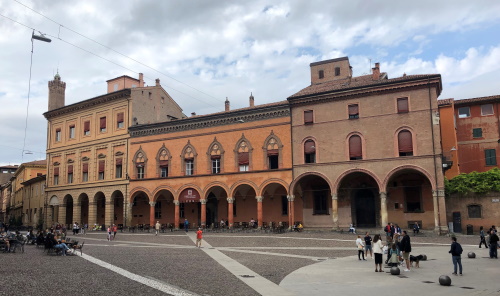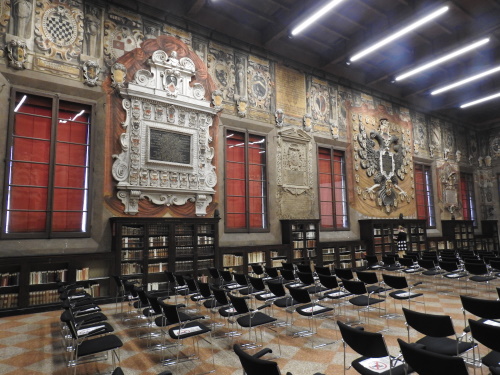Blog WHS Visits
WHS #761: Bologna
The last time that I had Italy 'complete' (i.e., I had visited all of its then 57 WHS), it lasted for only 2 weeks. But after my recent visit to Bologna I now have full coverage for at least 10 more months (unfortunately I don’t ‘have’ Italy’s 2022 nomination Civita di Bagniregio already). Bologna's Porticoes got inscribed last July, a slight surprise after a Deferral advice. On the ground, I found no official plaques yet, nor the Italian equivalent of jubilant “Wir sind Welterbe” banners.
My first impression of the city wasn’t that great: its streets are a bit grubby, with walls covered in graffiti. The porticoes allow for little daylight on a cloudy day. Fortunately, the core zone was extended in the final nomination proposal, so the most important monuments of the city that lie anywhere near a portico are now also included.
A remarkable one is the San Petronio Basilica – a church that was planned to become bigger than St. Peter's in the Vatican. That didn't quite work out, but it still is one of the largest churches in the world (just beating the Cologne Cathedral for example). Its façade also stayed unfinished. The entrance is guarded by armed soldiers – terrorists have already planned to blow up this church twice due to it having a 15th-century fresco depicting Mohammed in hell, tormented by devils.
The church interior didn’t do much for me. In the side street next to it I found a much more interesting building: the Archiginnasio Palace. It was the main building of the University of Bologna in the 16th and 17th centuries. Many of the walls here are covered with images of coats of arms, bearing the names of student leaders and their country or city of origin. There are also busts of important teachers. The most beautiful historic hall is the Anatomical Theater. At the central white table, human and animal bodies were dissected. The rest of the room's furnishings are made entirely out of pine wood.
On Sunday morning I put on my hiking boots to visit one of the more remote porticoes. The Certosa component, a long corridor that ends at a monumental cemetery, lies 3.5 kilometers from the city center. Walking on the sidewalk across the street I had a good exterior view of this 400-meter-long passage. The eye-catcher about halfway is the Marathon Tower (see 3rd picture) – it's the gateway to Bologna's football stadium. This entrance was incorporated into the 19th-century portico by the fascist regime in the 1920s.
The Certosa porticoed path ends at the crossroads with an even longer covered path: the 4km long one to the hilltop San Luca Sanctuary. This one seems to be a popular place of exercise for the Bolognese residents on an early Sunday morning.
I can't think of any Italian regional capital that isn't worth visiting; there is always plenty of art, architecture, and history to be found. That also applies to Bologna, but is it so much “better” than nearby Parma, for example? Both get 2 stars in the Michelin Green Guide, where the more classical Italian highlights score 3. The porticoes alone are hardly worth a visit. In the end, I managed to visit 10 out of the 12 locations. My final one was a 20th-century example, the sleek gray portico that is attached to the MAMbo art museum.
Els - 5 September 2021
Comments
Esteban Cervantes Jiménez (vantcj1) 8 September 2021
Without having visited, I have had for years a "soft point" for Bologna. Of course I think that the thematic approach chosen was cumbersome and a more sincere nomination of the biggest historic center of Europe would have been more appropriate. But anyway, congratulations for re-completing Italy.
Kyle Magnuson 5 September 2021
It's a fun pursuit and impressive one to "complete" large or medium-sized countries. Italy is an exceptional task to cover all 58 WHS! Congratulations!


